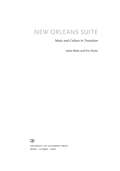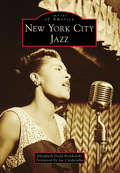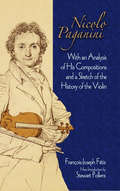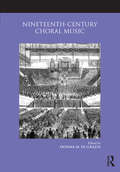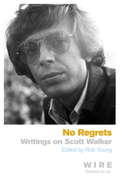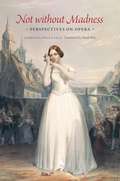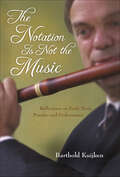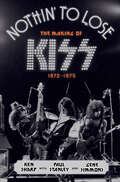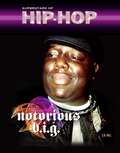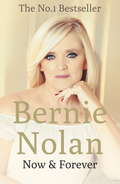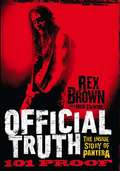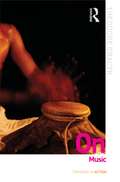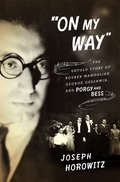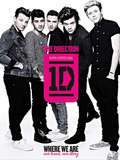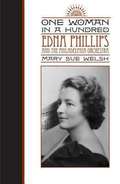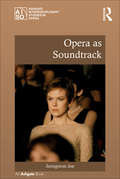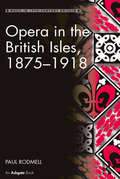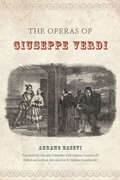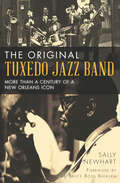- Table View
- List View
New Music at Darmstadt
by Martin IddonNew Music at Darmstadt explores the rise and fall of the so-called 'Darmstadt School', through a wealth of primary sources and analytical commentary. Martin Iddon's book examines the creation of the Darmstadt New Music Courses and the slow development and subsequent collapse of the idea of the Darmstadt School, showing how participants in the West German new music scene, including Herbert Eimert and a range of journalistic commentators, created an image of a coherent entity, despite the very diverse range of compositional practices on display at the courses. The book also explores the collapse of the seeming collegiality of the Darmstadt composers, which crystallised around the arrival there in 1958 of the most famous, and notorious, of all post-war composers, John Cage, an event Carl Dahlhaus opined 'swept across the European avant-garde like a natural disaster'.
New Orleans Suite
by Eric Porter Lewis WattsWith New Orleans Suite, Eric Porter and Lewis Watts join the post-Katrina conversation about New Orleans and its changing cultural scene. Using both visual evidence and the written word, Watts and Porter pay homage to the city, its region, and its residents, by mapping recent and often contradictory social and cultural transformations, and seeking to counter inadequate and often pejorative accounts of the people and place that give New Orleans its soul. Focusing for the most part on the city's African American community, New Orleans Suite is a story about people: how bad things have happened to them in the long and short run, how they have persevered by drawing upon and transforming their cultural practices, and what they can teach us about citizenship, politics, and society.
New York City Jazz
by Joe Cinderella Elizabeth Dodd BrinkofskiNew York City Jazz explores many of the haunts and hideaways that have played host to iconic jazz musicians and singers like Charlie Parker, Miles Davis, John Coltrane, Bill Evans, Billie Holiday, Dizzy Gillespie, and Lester Young. Considered the jazz capital of the world, New York City is known for its flashy venues. The stages of the Latin Quarter, Apollo Theater, Minton's Playhouse, Onyx, Stork Club, Downbeat Club, Birdland, Roseland, and Copacabana came to life with the sounds of pianos, drums, horns, and gypsy guitars. This collection of images presents why Fifty-second Street was nicknamed "Swing Street" and how musicians made timeless names for themselves in the Empire City.
Nicolo Paganini: With an Analysis of His Compositions and a Sketch of the History of the Violin (Dover Books on Music)
by Stewart Pollens Francois-Joseph FetisWritten by an immensely important musicologist, this rare 1860 monograph analyzes Nicolo Paganini's compositions and provides a fascinating history of the violin. Author François-Joseph Fétis was Paganini's close friend and well acquainted with many other Romantic composers and artists. Students of the history of music, music lovers, violinists, and musicologists will find this volume a rare source of firsthand observations on the legendary violin virtuoso and his circle.The treatise begins with a survey of the violin's history that profiles famous makers, including the Amati, Stradivari, and Guarneri families. The subsequent essay, "Art and Artists," provides a concise review of performances, focusing on the Italian and French schools. The biography of Paganini follows, providing rare perspectives on the artist's playing, personal habits, and social behavior -- a colorful portrait of a legendary musician as well as a valuable historical resource.
Nineteenth-Century Choral Music
by Donna M. Di GraziaNineteenth-Century Choral Music is an in-depth examination of the rich repertoire of choral music and the cultural phenomenon of choral music making throughout the period. The book is divided into three main sections. The first details the attraction to choral singing and the ways it was linked to different parts of society, and to the role of choral voices in the two principal large-scale genres of the period: the symphony and opera. A second section highlights ten choral-orchestral masterworks that are a central part of the repertoire. The final section presents overview and focus chapters covering composers, repertoire (both small and larger works), and performance life in an historical context from over a dozen regions of the world: Britain and Ireland, the Czech Republic, France, Germany, Hungary, Italy, Latin America, the Philippines, Poland, Russia, Scandinavia and Finland, Spain, and the United States. This diverse collection of essays brings together the work of 25 authors, many of whom have devoted much of their scholarly lives to the composers and music discussed, giving the reader a lively and unique perspective on this significant part of nineteenth-century musical life.
No Regrets: Writings on Scott Walker
by Rob YoungA colourful collection of pieces on the enigmatic genius of Scott Walker from THE WIRE.Scott Walker has travelled from teen idol to the outer limits of music. From 'The Sun Ain't Gonna Shine Any More' reaching No.1, through to recordings of meat being punched on his last album, THE DRIFT, he somehow seems to have reached a passionate and committed fan base. Throughout his career, his impeccable critical reputation as a serious and uncompromising musician has never been questioned. The recent film, 30TH CENTURY MAN, had a litany of stars queuing up to praise Walker: the likes of David Bowie, Damon Albarn, Jarvis Cocker, Radiohead, Johnny Marr and Sting. But despite this, in 40 years of music, there has yet to be a serious book on Scott Walker. This collection, put together by Rob Young of THE WIRE magazine, features a handful of previously published articles and newly commissioned pieces, largely drawn from the orbit of THE WIRE's writers including Ian Penman, Chris Bohn and Rob Young.
Not Without Madness: Perspectives on Opera
by Fabrizio Della SetaOpera often seems to arouse either irrational enthusiasm or visceral dislike. Such madness, as Goethe wrote, is indispensable in all theater, and yet in practice, sentiment and passion must be balanced by sense and reason. Exploring this tension between madness and reason, Not without Madness presents new analytical approaches to thinking about eighteenth- and nineteenth-century opera through the lenses of its historical and cultural contexts. In these twelve essays, Fabrizio Della Seta explores the concept of opera as a dramatic event and an essential moment in the history of theater. Examining the meaning of opera and the devices that produce and transmit this meaning, he looks at the complex verbal, musical, and scenic mechanisms in parts of La sonnambula, Ernani, Aida, Le nozze di Figaro, Macbeth, and Il trovatore. He argues that approaches to the study of opera must address performance, interpretation, composition, reception, and cultural ramifications. Purely musical analysis does not make sense unless we take into account music's dramatic function. Containing many essays available for the first time in English, Not without Madness bridges recent divisions in opera studies and will attract musicologists, musicians, and opera lovers alike.
The Notation Is Not the Music: Reflections on Early Music Practice and Performance (Publications of the Early Music Institute)
by Barthold KuijkenWritten by a leading authority and artist of the historical transverse flute, The Notation Is Not the Music offers invaluable insight into the issues of historically informed performance and the parameters—and limitations—of notation-dependent performance. As Barthold Kuijken illustrates, performers of historical music should consider what is written on the page as a mere steppingstone for performance. Only by continual examination and reexamination of the sources to discover original intent can an early music practitioner come close to authentic performance.
Nothin' to Lose: The Making of KISS (1972–1975)
by Ken Sharp Gene Simmons“Nothin’ to Lose brought back great memories of our days touring with KISS in the ‘70s. The book is an incredible ride through KISS’s early days and a must read for any KISS fan!” — Don Powell, Slade“Like taking a time machine back to the ‘70s, Nothin’ to Lose is a wild and no holds barred look at the rise of KISS.” — Eric Carmen, Raspberries“In Nothin’ to Lose you witness first-hand the extraordinary transformation of four struggling musicians from New York City overcoming almost insurmountable odds to become worldwide superstars. This is the definitive account of KISS’s early years.” — Kevin Cann, author of David Bowie: Any Day Now“The KISS boys will go down in history for their indefatigable work ethic, spirit, and insatiable appetite for all things honest-to-God outrageous rock ‘n’ roll. KISS is the real deal and this book is the real story of the American rock ‘n’ roll dream.” — Ted Nugent“Nothin’ to Lose is an electrifying look at a band that changed the course of rock and roll history by sticking to their guns and blazing their own trail of heavy metal thunder. I couldn’t put it down. Two thumbs up!” — Joe Perry, Aerosmith“Rises above the standard cookie-cutter anecdotes... [for] a unique look at the origins of one of the greatest rock bands of all time. Anyone who wants to know what it was like to make it in rock ‘n’ roll in the seventies will need to pick this up.” — Dale Sherman, author of Black Diamond: The Unauthorized Biography of KISS“Told with complete accuracy and attention to detail... Mandatory reading for every new artist. This is a masterpiece!” — Kenny Kerner, Co-producer of KISS and Hotter Than Hell“A joyous and mesmerizing exploration of the early history of the ‘Hottest Band in the World’... This book is addictive. You won’t be able to put it down!” — Julian Gill, author of the Kiss Album Focus series“From KISS’s earliest days playing crummy bars in front of 50 people to headlining arenas, Nothin’ to Lose is a gripping look at the underbelly of rock ‘n’ roll. And as one of the members of KISS’s original road crew, I should know, I was there.” — Peter "Moose" Oreckinto, KISS roadie (1973-1976)“The ultimate KISS book. . . Nothin’ to Lose gives the insider’s perspective any KISS fan must have — Charles R. Cross, author of Heavier than Heaven: A Biography of Kurt Cobain“Even casual fans will be enthralled.” — Robert Rodriguez, author of Revolver: How The Beatles Reimagined Rock 'N' Roll“Revel in the roar of the greasepaint and the smell of the crowd as they share it all, blow-by-blow, first hand.” — Paul Myers, author of A Wizard A True Star: Todd Rundgren In The Studio“A fascinating read about one of rock’s most outrageous bands.” — Simon Kirke, Bad Company/Free“I found the story of KISS’s fanatical determination, shockingly rare matter-of-fact common sense, raw luck, exquisite timing-not to mention the sheer brinksmanship of the whole lunatic enterprise-exhilarating and inspiring.” — Binky Philips, My Life in the Ghost of Planets: The Story of a CBGB Almost-Was“A vivid oral history of the early days of one of rock’s most outrageous and enduring bands, Nothin’ to Lose makes every reader an eyewitness to the dawn of Kiss. Here’s a book that screams out: C’mon and read me.” — David Browne, author of Goodbye 20th Century: A Biography of Sonic Youth“An incredibly vivid and gripping oral history that illustrates how Kiss went through a slow and steady transformation from a loft party band to the hottest concert attraction capable of blowing anybody and everybody off the stage.” — Daniel Siwek, House of Blues“If you thought you knew everything there was to know about KISS . . . wel
Notorious B.I.G. (Superstars of Hip-Hop)
by Z. B. HillYears after his death, Notorious B.I.G. is still thought of as one of the greatest rappers of all time. Fans haven't forgotten Biggie's impact on the hip-hop world. Big helped to make hip-hop what it is today. Without Notorious B.I.G., hip-hop would be very different today! Notorious B.I.G. tells the story of how Christopher Wallace used his gifts to become a megastar. Readers will also learn about how hip-hop became popular around the world thanks to help from Biggie.
Now and Forever
by Bernie NolanTwo years ago Bernie Nolan was given the initial all-clear after a courageous battle with breast cancer. Over the moon, Bernie set about rebuilding her life and making plans for the future. Then in the summer of 2012, she was in her bedroom getting dressed when she found a lump just above her breast. Terrified, she immediately made a hospital appointment, where she was given the devastating news that the cancer had returned. It had spread to her brain, lungs, liver and bones and was incurable. Bernie's first thought was of her daughter. Erin had just turned thirteen and was approaching a time when young girls need their mums more than ever. In true Bernie spirit she vowed not to let the cancer stop her from being 'Mum'. Bernie always said that her family was her greatest achievement and she wanted to be the best wife and mother she could be in the time she had left. In this book Bernie shares her struggle to become a mother - the miscarriage she suffered and the heartbreaking stillbirth of her daughter Kate, and the joyous arrival of her beautiful daughter Erin. Bernie loved seeing this book published and was thrilled when it became a number 1 bestseller. It meant a great deal to her that so many people wanted to read her story. This is a memoir brimming with happy memories, and although Bernie tragically lost her battle on the 4th July 2013, she lives on in the hearts of the nation and in the pages of this book. Moving and wonderfully warm-hearted, this is a powerful story of a remarkable life and a mother's brave fight against a vicious disease.
Now and Forever
by Bernie NolanTwo years ago Bernie Nolan was given the initial all-clear after a courageous battle with breast cancer. Over the moon, Bernie set about rebuilding her life and making plans for the future. Then in the summer of 2012, she was in her bedroom getting dressed when she found a lump just above her breast. Terrified, she immediately made a hospital appointment, where she was given the devastating news that the cancer had returned. It had spread to her brain, lungs, liver and bones and was incurable. Bernie's first thought was of her daughter. Erin had just turned thirteen and was approaching a time when young girls need their mums more than ever. In true Bernie spirit she vowed not to let the cancer stop her from being 'Mum'. Bernie always said that her family was her greatest achievement and she wanted to be the best wife and mother she could be in the time she had left. In this book Bernie shares her struggle to become a mother - the miscarriage she suffered and the heartbreaking stillbirth of her daughter Kate, and the joyous arrival of her beautiful daughter Erin. Bernie loved seeing this book published and was thrilled when it became a number 1 bestseller. It meant a great deal to her that so many people wanted to read her story. This is a memoir brimming with happy memories, and although Bernie tragically lost her battle on the 4th July 2013, she lives on in the hearts of the nation and in the pages of this book. Moving and wonderfully warm-hearted, this is a powerful story of a remarkable life and a mother's brave fight against a vicious disease.
Official Truth, 101 Proof: The Inside Story of Pantera
by Rex BrownFew heavy metal acts survived the turmoil of the early 1990s music scene. Pantera was different. Instead of humoring the market, the band instead demanded that the audience come to them by releasing a series of fiercely uncompromising, platinum albums, including Vulgar Display of Power and Far Beyond Driven-two #1 albums that, like Metallica's And Justice for All, sold millions of copies despite minimal airplay.Rex Brown's memoir is the definitive account of life inside one of rock's biggest bands, which succeeded against all odds but ultimately ended in tragedy when iconic lead guitarist Darrell "Dimebag" Abbott was murdered mid-performance by a deranged fan.This is a lucid account of the previously untold story behind one of the most influential bands in heavy metal history, written by the man best qualified to tell the truth about those incredible and often difficult years of fame and excess.
On Highway 17
by B. Z. VukovinaOn Highway 17 by B. Z. R. Vukovina where passion burns brighter than fame as an idealistic guitarist makes his way to California, and the young musician is suddenly forced to question his destiny.
On Music (Thinking in Action)
by Theodore GracykOpinionated and example-filled, this extremely concise and accessible book provides a survey of some fundamental and longstanding debates about the nature of music. The central arguments and ideas of historical and contemporary philosophers are presented with the goal of making them as accessible as possible to general readers who have no background in philosophy. The emphasis is on instrumental music, but examples are drawn from many cultures as well as from Western classical, jazz, folk, and popular music.
"On My Way": The Untold Story of Rouben Mamoulian, George Gershwin, and Porgy and Bess
by Joseph HorowitzA revelatory history of the operatic masterpiece that both made and destroyed Rouben Mamoulian, its director and unsung hero. "Bring my goat!" Porgy exclaims in the final scene of Gershwin's opera Porgy and Bess. Bess, whom he loves, has left for New York City, and he's determined to find her. When his request is met with astonishment--New York is a great distance from South Carolina's Catfish Row--Porgy remains undaunted. He mounts his goat-cart and leads the community in an ecstatic finale, "Oh Lawd, I'm on my way." Stephen Sondheim has called "Bring my goat!" "one of the most moving moments in musical theater history." For years it was assumed that DuBose Heyward--the author of the seminal novella and subsequent play, Porgy, and later the librettist for the opera Porgy and Bess--penned this historic line. In fact, both it and "Oh Lawd, I'm on my way" were added to the play eight years earlier by that production's unheralded architect: Rouben Mamoulian. Porgy and Bess as we know it would not exist without the contributions of this master director. Culling new information from the recently opened Mamoulian Archives at the Library of Congress, award-winning author Joseph Horowitz shows that, more than anyone else, Mamoulian took Heyward's vignette of a regional African-American subculture and transformed it into an epic theater work, a universal parable of suffering and redemption. Part biography, part revelatory history, "On My Way" re-creates Mamoulian's visionary style on stage and screen, his collaboration with George Gershwin, and the genesis of the opera that changed the face of American musical life.
One Direction: Where We Are
by One DirectionCalling all One Direction fans This is the only official book from 1D charting their journey over the last year and a half--from the places theyve visited and fans theyve met, to their thoughts and feelings, hopes and dreams, highs and lows. It has been a phenomenal year--and this is a phenomenal story. This Christmas, there will be no other book that true One Direction fans will want
One Woman in a Hundred: Edna Phillips and the Philadelphia Orchestra (Music in American Life)
by Mary Sue WelshGifted harpist Edna Phillips (1907–2003) joined the Philadelphia Orchestra in 1930, becoming not only that ensemble's first female member but also the first woman to hold a principal position in a major American orchestra. Plucked from the Curtis Institute of Music in the midst of her studies, Phillips was only twenty-three years old when Leopold Stokowski, one of the twentieth century's most innovative and controversial conductors, named her principal harpist. This candid, colorful account traces Phillips's journey through the competitive realm of Philadelphia's virtuoso players, where she survived--and thrived--thanks to her undeniable talent, determination, and lively humor. Drawing on extensive interviews with Phillips, her family, and colleagues as well as archival sources, One Woman in a Hundred chronicles the training, aspirations, setbacks, and successes of this pioneering woman musician. Mary Sue Welsh recounts numerous insider stories of rehearsal and performance with Stokowski and other renowned conductors of the period such as Arturo Toscanini, Fritz Reiner, Otto Klemperer, Sir Thomas Beecham, and Eugene Ormandy. She also depicts Phillips's interactions with fellow performers, the orchestra management, and her teacher, the wily and brilliant Carlos Salzedo. Blessed with a nimble wit, Phillips navigated a plethora of challenges, ranging from false conductors' cues to the advances of the debonair Stokowski and others. She remained with the orchestra through some of its most exciting years from 1930 to 1946 and was instrumental in fostering harp performance, commissioning many significant contributions to the literature. This portrait of Phillips's exceptional tenure with the Philadelphia Orchestra also reveals the behind-the-scenes life of a famous orchestra during a period in which Rachmaninoff declared it "the finest orchestra the world has ever heard." Through Phillips's perceptive eyes, readers will watch as Stokowski melds his musicians into a marvelously flexible ensemble; world-class performers reach great heights and make embarrassing flubs; Greta Garbo comes to Philadelphia to observe her lover Leopold Stokowski at work; and the orchestra encounters the novel experience of recording for Walt Disney's Fantasia. A colorful glimpse into a world-class orchestra at the height of its glory, One Woman in a Hundred tells the fascinating story of one woman brave enough and strong enough to overcome historic barriers and pursue her dreams.
Opera as Soundtrack (Ashgate Interdisciplinary Studies in Opera)
by Jeongwon JoeFilmmakers' fascination with opera dates back to the silent era but it was not until the late 1980s that critical enquiries into the intersection of opera and cinema began to emerge. Jeongwon Joe focusses primarily on the role of opera as soundtrack by exploring the distinct effects opera produces in film, effects which differ from other types of soundtrack music, such as jazz or symphony. These effects are examined from three perspectives: peculiar qualities of the operatic voice; various properties commonly associated with opera, such as excess, otherness or death; and multifaceted tensions between opera and cinema - for instance, opera as live, embodied, high art and cinema as technologically mediated, popular entertainment. Joe argues that when opera excerpts are employed on soundtracks they tend to appear at critical moments of the film, usually associated with the protagonists, and the author explores why it is opera, not symphony or jazz, that accompanies poignant scenes like these. Joe's film analysis focuses on the time period of the post-1970s, which is distinguished by an increase of opera excerpts on soundtracks to blockbuster titles, the commercial recognition of which promoted the production of numerous opera soundtrack CDs in the following years. Joe incorporates an empirical methodology by examining primary sources such as production files, cue-sheets and unpublished interviews with film directors and composers to enhance the traditional hermeneutic approach. The films analysed in her book include Woody Allen’s Match Point, David Cronenberg’s M. Butterfly, and Wong Kar-wai’s 2046.
Opera in the Age of Rousseau
by David CharltonHistorians of French politics, art, philosophy and literature have long known the tensions and fascinations of Louis XV's reign, the 1750s in particular. David Charlton's study comprehensively re-examines this period, from Rameau to Gluck and elucidates the long-term issues surrounding opera. Taking Rousseau's Le Devin du Village as one narrative centrepiece, Charlton investigates this opera's origins and influences in the 1740s and goes on to use past and present research to create a new structural model that explains the elements of reform in Gluck's tragédies for Paris. Charlton's book opens many new perspectives on the musical practices and politics of the period, including the Querelle des Bouffons. It gives the first detailed account of intermezzi and opere buffe performed by Eustachio Bambini's troupe at the Paris Opéra from August 1752 to February 1754 and discusses Rameau's comedies Platée and Les Paladins and their origins.
Opera in the British Isles, 1875-1918 (Music in Nineteenth-Century Britain)
by Paul RodmellWhile the musical culture of the British Isles in the 'long nineteenth century' has been reclaimed from obscurity by musicologists in the last thirty years, appraisal of operatic culture in the latter part of this period has remained largely elusive. Paul Rodmell argues that there were far more opportunities for composers, performers and audiences than one might expect, an assertion demonstrated by the fact that over one hundred serious operas by British composers were premiered between 1875 and 1918. Rodmell examines the nature of operatic culture in the British Isles during this period, looking at the way in which opera was produced and 'consumed' by companies and audiences, the repertory performed, social attitudes to opera, the dominance of London's West End and the activities of touring companies in the provinces, and the position of British composers within this realm of activity. In doing so, he uncovers the undoubted challenges faced by opera in Britain in this period, and delves further into why it was especially difficult to make a breakthrough in this particular genre when other fields of compositional endeavour were enjoying a period of sustained growth. Whilst contemporaneous composers and commentators and later advocates of British music may have felt that the country's operatic life did not measure up to their aspirations or ambitions, there was still a great deal of activity and, even if this was not necessarily that which was always desired, it had a significant and lasting impact on musical culture in Britain.
The Operas of Giuseppe Verdi
by Stefano Castelvecchi Abramo Basevi translated by Edward Schneider edited by Stefano CastelvecchiAbramo Basevi published his study of VerdiOCOs operas in Florence in 1859, in the middle of the composerOCOs career. The first thorough, systematic examination of VerdiOCOs operas, it covered the twenty works produced between 1842 and 1857OCofrom "Nabucco" and "Macbeth" to "Il trovatore," "La traviata," and "Aroldo. " But while BaseviOCOs work is still widely cited and discussedOCoand nowhere more so than in the English-speaking worldOCono translation of the entire volume has previously been available. "The Operas of Giuseppe Verdi "fills this gap, at the same time providing an invaluable critical apparatus and commentary on BaseviOCOs work. aAs a contemporary of Verdi and a trained musician, erudite scholar, and critic conversant with current and past operatic repertories, Basevi presented pointed discussion of the operas and their historical context, offering todayOCOs readers a unique window into many aspects of operatic culture, and culture in general, in VerdiOCOs Italy. He wrote with precision on formal aspects, use of melody and orchestration, and other compositional features, which made his study an acknowledged model for the growing field of music criticism. Carefully annotated and with an engaging introduction and detailed glossary by editor Stefano Castelvecchi, this translation illuminates BaseviOCOs musical and historical references as well as aspects of his language that remain difficult to grasp even for Italian readers. aMaking BaseviOCOs important contribution to our understanding of Verdi and his operas available to a broad audience for the first time, " The Operas of Giuseppe Verdi" will delight scholars and opera enthusiasts alike. "
The Orchestral Revolution
by Emily I. DolanThe Orchestral Revolution explores the changing listening culture of the eighteenth and early nineteenth centuries. Delving into Enlightenment philosophy, the nature of instruments, compositional practices and reception history, this book describes the birth of a new form of attention to sonority and uncovers the intimate relationship between the development of modern musical aesthetics and the emergence of orchestration. By focusing upon Joseph Haydn's innovative strategies of orchestration and tracing their reception and influence, Emily Dolan shows that the consolidation of the modern orchestra radically altered how people listened to and thought about the expressive capacity of instruments. The orchestra transformed from a mere gathering of instruments into an ideal community full of diverse, nuanced and expressive characters. In addressing this key moment in the history of music, Dolan demonstrates the importance of the materiality of sound in the formation of the modern musical artwork.
Orientalism and Musical Mission: Palestine and the West
by Rachel Beckles WillsonOrientalism and Musical Mission presents a new way of understanding music's connections with imperialism, drawing on new archive sources and interviews and using the lens of 'mission'. Rachel Beckles Willson demonstrates how institutions such as churches, schools, radio stations and governments, influenced by missions from Europe and North America since the mid-nineteenth century, have consistently claimed that music provides a way of understanding and reforming Arab civilians in Palestine. Beckles Willson discusses the phenomenon not only in religious and developmental aid circles where it has had strong currency, but also in broader political contexts. Plotting a historical trajectory from the late Ottoman and British Mandate eras to the present time, the book sheds new light on relations between Europe, the USA and the Palestinians, and creates space for a neglected Palestinian music history.
The Original Tuxedo Jazz Band: More Than a Century of a New Orleans Icon (Music Ser.)
by Sally NewhartA lively look at the long career of these legendary musicians, from a Storyville dance hall to the White House and beyond. In 1910, the Tuxedo Jazz Band played its first show at the Tuxedo Dance Hall in Storyville under Oscar Celestin. The popular ensemble would go on to play all over New Orleans, as well as across the South and the nation—and in 1953, it became the first jazz band to play the White House. The band has punctuated jazz history and produced some of the most memorable musicians of the past century: Bob French, Albert French, William Ridgley, Octave Crosby, Louis Armstrong, and more. Author Sally Newhart has written a definitive and captivating history of the band from inception to present, including oral histories, archival photos, a discography, and a previously unpublished complete list of members since 1910.

